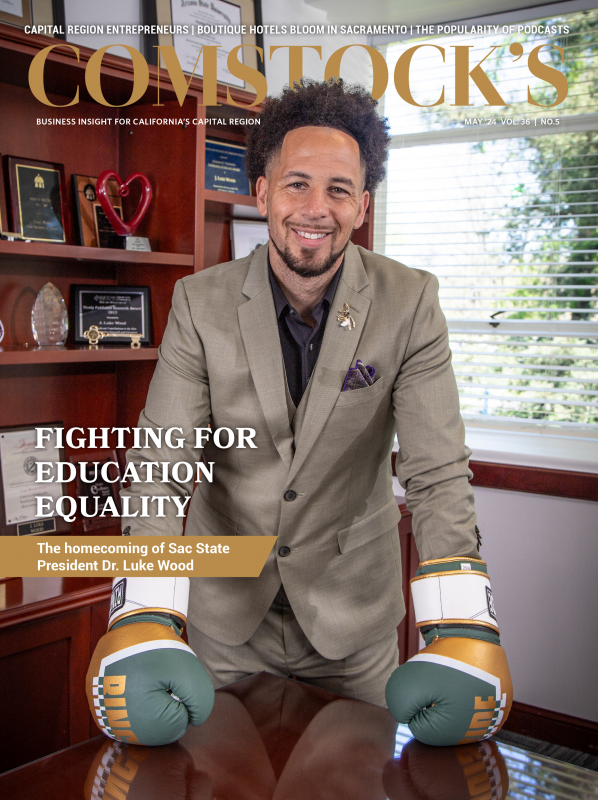Roger Hume stands near a hallway window at what used to be the Eastern Star Temple.
Originally built in the 1920s for $226,000 as a meeting hall for the Order of the Eastern Star, a Masonic body open to women, the temple served various purposes over the years. Sacramento-area students used to come to the temple for high school dances. The building also hosted Sacramento Ballet’s studio at one point in the 1990s, before it eventually sat vacant for nearly a decade into the late 2010s.
Then came Hume, who largely gutted the building in 2020 and kept the exterior shell, while building a sleek, eight-story hotel inside. The payoff is a 128-room, four-star hotel — Hyatt House in Midtown Sacramento with an above-the-trees view of nearby Sutter’s Fort from the window Hume is standing at. Its Art Deco Star Lounge attracts locals as well.
“There’s not a hotel that has this view — none of ‘em,” says Hume, who served as master developer of the hotel and has maintained ownership.
The transformation of Hume’s building at 27th and K streets from historic meeting hall to luxury hotel signifies a shift currently underway for Sacramento’s tourism industry. Where once, local hoteliers could provide bland experiences for travelers just needing a place to sleep, people like Hume must now offer one-of-a-kind lodging.
An array of high-end hotels have opened downtown in recent years. And more could be in the works as the city’s downtown core continues to transform since the 2016 opening of Golden 1 Center and renovations of the city’s convention center.
The new wave of downtown hotels
Even before the Golden 1 Center’s opening, nice hotels could be found downtown. These include the Hyatt Regency at 1209 L Street, where Arnold Schwarzenegger lived in a penthouse while he was governor of California; the Sheraton Grand Hotel at 1230 J Street, which will be renovating its 503 rooms and suites this year; the Citizen Hotel at 926 J Street and the Embassy Suites on the riverfront in Old Sac.
The arena’s opening, though, has spurred a new wave of hotel development downtown. It can be traced back to 2017 with the opening of the 250-room Kimpton Sawyer, though plenty of hotels have been coming online since then.
The newest is the 179-room AC Hotel by Marriott Sacramento, which opened at 905 7th Street on March 7 and is already doing brisk business. European-inspired and minimalist, the hotel has an occupancy rate in the range of 70 percent, according to the hotel’s general manager Zuzana Strouhalova. It offers amenities such as an “elevated continental breakfast” with artisan sliced meats, cheeses and egg tarts.
“We thought it would actually start with being somewhere like 40 percent, but nope,” says Strouhalova. “We’ve just gotten hit from when we started. So we are pretty happy.”
It mirrors a recovery other local hoteliers are experiencing, with occupancy rates above 70 percent downtown, according to Mike Testa, president and CEO of Visit Sacramento. While occupancy rates still aren’t at the 83 percent level they were pre-pandemic, they are night and day better than the single-digit rates of the bleak, early days of COVID.
Testa notes that in 2023, between conventions, sporting events and festivals, his organization booked more room nights — 332,000 — than ever before in its 97-year history. “The demand for the market is there,” Testa says.
Still, that doesn’t necessarily mean more rooms, with Testa noting that there are just three more hotel rooms total downtown than there were in 2019. Sacramento’s hotel market hasn’t been growing so much as it’s been profoundly shifting.
Gone are hotels like a former Holiday Inn Express on 16th Street, which was turned into housing. Adjacent to this, the old Mansion Inn Clarion Hotel also was replaced with housing in recent years. Plus, the 324-room Radisson Hotel off Highway 160 near Cal Expo was demolished in 2017.
And there was the former Hotel Marshall at 1122 7th Street, which dated to 1911 and featured the Clayton Club where Cab Calloway, Louis Armstrong and Billie Holiday performed. In late 2021, the 172-room Hyatt Centric opened, keeping only the Marshall’s shell. Otherwise, this is a whole different establishment, with an airy and mid-century modern vibe.
“Boutique hotels are really on-trend right now, so that’s what the new hotels are all leaning toward,” says Nancy Wagner, Hyatt Centric’s sales and marketing director.
Each of the new hotels seems to bring its own unique flair. At Hyatt Centric, it’s music. There are vinyl records in the ground floor lobby and a suite upstairs. The hotel’s sixth floor includes a reimagined Clayton Club. Every room of the hotel has a mural of Holiday inside of a custom credenza.
Several blocks away, on the other side of Downtown Commons, The Exchange Hotel, part of the Curio Collection by Hilton, also opened in 2021. Located inside a former fruit exchange, this hotel is dark and has some quirky branding. One of the hotel’s symbols is a character known as Mr. Exchange. The hotel’s green carpet represents his socks; its light fixtures, his cufflinks; and blue wallpaper for his suit. Inside is the new Willow restaurant with a rich, vibrant design and southern Mediterranean cuisine.
“We can give experiences that a lot of larger hotels can’t give,” says Kinjal Shah, the hotel’s general manager. “This is not just another Holiday Inn. This is a high-end luxury product and we definitely value servicing individuality as much as we can.”
More could be coming.
Increasing inventory
Stacy Paragary sits on the patio of her Fort Sutter Hotel, a 105-room venue that operates as part of Hilton’s Tapestry brand.
Paragary and her late husband and local culinary pioneer Randy Paragary, who died of cancer months after their venue’s 2021 opening, envisioned opening a hotel built around a restaurant. It’s safe to say business is going well, with Fort Sutter Hotel boasting a 3.5-star rating and 82 percent occupancy, according to Stacy Paragary.
Boutique hotels are focusing on unique food offerings like the
tapas at the new AC Hotel by Marriott Sacramento. (Photos by Katy
Karns)

But she also acknowledges that there might be a need that hotels like hers can’t fill on their own.
“As Mike Testa will tell you and he’s told me, my 105 rooms didn’t even put a dent in the demand,” Paragary says.
While Paragary herself is skeptical of this line of thinking, questioning if the region hosts enough events and noting that “hotels can’t survive off six busy weekends a year,” plenty of others support building more hotels.
“I think we’re several hundred hotel rooms below market,” says Barry Broome, CEO of the Greater Sacramento Economic Council. “I think if we’re going to be a destination city, you’re going to need more hotels.”
Local leaders have touted the idea over the years of hosting an NBA All-Star Weekend since Golden 1 Center’s opening. Whether Sacramento could eventually do this might hinge on how many hotel rooms it has. Testa noted recently revised guidelines from the NBA that a city must have 7,000 hotel rooms downtown. That leaves Sacramento around 3,000 rooms short.
Then there’s the SAFE Credit Union Convention Center, which the city completed renovations on in 2021 at a cost of $245 million. It now hosts events like a recent American Physical Society meeting. Jonathan Wiser, deputy general manager for the center, says the city is seeing a good return on investment for this work. But there are limits on the size of tradeshows the convention center can draw.
“We might be able to fit the trade show,” Wiser says. “At 160,000 square feet, we have plenty of space. But there’s not enough hotels to house the exhibitors.”
Then there are the Oakland Athletics, who plan to play three seasons at Sutter Health Park in West Sacramento starting next year ahead of the team’s move to Las Vegas.
While the A’s were dead last in attendance in 2023 and will be playing in a Triple-A ballpark that seats just 14,000, their tenancy might lead to more hotel rooms being sold locally. This could hold particularly true if the A’s time in Sacramento paves the way for a Major League Baseball expansion franchise or the team bungles its move to Sin City and gets stuck locally.
Michael Ault, executive director of the Downtown Sacramento Partnership, also argues for more hotels. “We should prioritize incentives to get new hotels down here,” Ault says. “It will be nothing but additive.”
Some are already heeding the calls from local leaders.
Tony Giannoni is master developer for a 350-room hotel that he says will be between 26 and 28 stories tall and be located adjacent to the convention center. Giannoni says the project’s preliminary plans are completed, and he hopes to submit them to Sacramento City Council this year for final approval.
“I’d like to have it open yesterday, but I’m suspecting that with a commencement of construction sometime in ‘25, it is going to take 18-24 months to build this thing,” Giannoni says. “And so we probably won’t see this opening until 2027.”
Elsewhere downtown, Hume is now planning a second hotel, transforming the old Capital National Bank at the corner of 7th and J streets into a 107-room venue. He expects to be fully entitled later this year and is eying a summer 2026 opening.
Developer Tony Giannoni and construction firm Gafcon are planning
a 350-room, 28-story hotel tower next to the newly renovated
Sacramento Convention Center. (Rendering courtesy of Hornberger &
Worstell Architects)

“This is a far easier project,” Hume says. “So I’m not removing an entire building and building a new one inside of it and then making a marriage of new and old. I’m just gonna go in and clean and reimagine the space.”
Other projects are kicking around but might be further back in the pipeline.
Eva Hill is master developer for a 14-story, 265-room Hilton hotel, under its Canopy brand, to be located at the northwest corner of 9th and L streets. High interest rates have slowed her plans, though she hopes to break ground later this year. She says she’s been motivated to do her project by her ability to purchase the land and because she believes Sacramento needs more hotel rooms.
“I look at this site as kind of a doughnut hole in the middle of this city,” Hill says. “We’re so close to Golden 1, we’re so close to the state Capitol, we’re just a short walk from the convention center. So I look at the opportunities and the demand for rooms in this town. The opportunities for this project are just amazing.”
In Old Sacramento, California State Parks has done some early analysis for a 130-170 room hotel that could be located on grassy, sloping land directly across from the railroad museum. The hotel would be a callback to the historic City Hotel that stood in Sacramento’s early days.
Work has been slowed by significant analysis needed for the land and the state’s current budget problems. All the same, John Fraser, Capital District superintendent for California State Parks, is hopeful for what might eventually be in place.
“It’s something that could work really well down here if done appropriately,” Fraser says.
Sacramento’s hotels currently top out at four stars, with people like Paragary questioning if the city could ever support a five-star venue. Broome, though, is more bullish, envisioning a Four Seasons hotel near the Capitol Mall.
“We’ve got to stop underestimating our value and underestimating our market,” Broome says. “We would absolutely have a Four Seasons hotel sold out year-round.”
Stay up to date on the Capital Region’s business news: Subscribe to the Comstock’s newsletter today.
Recommended For You

History in Our Backyard
Past meets present in these quaint old towns that tourists are eager to explore
Auburn, Benicia, Folsom, Lodi and Truckee: five Northern California gems you’ll want to visit this summer.

The Bold Vision of Dr. Luke Wood
Sac State’s new, young president is creating an AI hub, Black honors program, college for foster youth and Combat U
Dr. Luke Wood has set his competitive sights on remaking his university into an institution that can compete academically, not just with other CSUs — he is clear in his ambition to make the beautiful, tree-filled and ethnically diverse campus the flagship university in the CSU system — but with the University of California campuses and other top-tier institutions around the country.
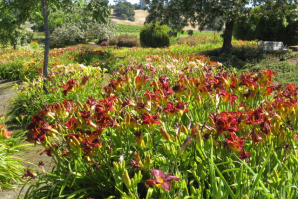
Stop and Smell the Daylilies at Amador Flower Farm
Take a break from wine tasting in the Shenandoah Valley to picnic in a garden
Nestled squarely in the midst of dozens of award-winning wineries that make Amador County’s Shenandoah Valley so unique, Amador Flower Farm in Plymouth is home to something different — an eye-popping 1,300 varieties of daylily.
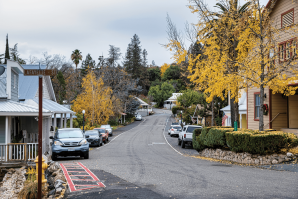
Mokelumne Hill Is Authentic California Gold Country
The entire Gold Rush-era town is a designated historic landmark
Mokelumne Hill may not be the busiest tourist hub in the Amador-Calaveras Sierra Nevada foothills loop that includes Sutter Creek, Jackson, Angels Camp and Murphys. But that doesn’t mean the uniquely well-preserved 1850s Gold Rush-era settlement along the Mokelumne River, often called Moke Hill by the locals, is lacking in things to do and see.
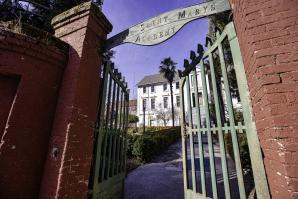
Grass Valley Museum Tells Untold History of Women During the Gold Rush
Industrious nuns, international stars and well-educated orphans
In a county known for its wealth of Gold Rush-era museums, undoubtedly some of the most compelling stories from that time reside at a former orphanage hidden within the 160-year-old walls of the Grass Valley Museum.
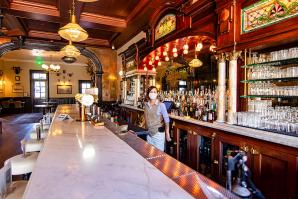
Two Gold Rush Era Hotels Return to Glitz and Glamour
The 169-year-old Holbrooke Hotel in Grass Valley and the 165-year-old National Exchange Hotel in Nevada City are fully restored and experiencing a rebirth.




